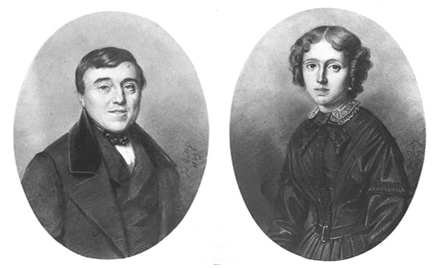
最新の記事
 ブリヂストン美術館がカイユボットの《イエールの平原》を新所蔵&展示
ブリヂストン美術館がカイユボットの《イエールの平原》を新所蔵&展示
ランダム表示
- 2015年2月 (2)
- 2014年12月 (4)
- 2014年11月 (2)
- 2014年5月 (2)
- 2014年3月 (1)
- 2013年12月 (3)
- 2013年11月 (1)
- 2013年10月 (1)
- 2013年8月 (2)
- 2013年3月 (3)
- 2013年2月 (2)
- 2013年1月 (3)
- 2012年9月 (3)
- 2012年4月 (1)
- 2012年2月 (2)
- 2011年10月 (4)
- 2011年9月 (5)
- 2011年8月 (5)
- 2011年7月 (8)
- 2011年4月 (2)
- 2011年2月 (1)
- 2010年12月 (2)
- 2010年10月 (3)
- 2010年9月 (4)
- 2010年8月 (2)
- 2010年7月 (5)
- 2010年6月 (6)
- 2009年11月 (1)
- 2009年6月 (30)
- 2009年3月 (1)
- 2009年2月 (4)
- 2009年1月 (6)
- 2008年12月 (6)
- 2008年11月 (6)
- 2008年10月 (12)
- 2008年9月 (1)
- 2008年7月 (1)
- 2008年6月 (11)
- 2008年5月 (3)
- 2008年3月 (9)
- 2008年2月 (2)
- 2008年1月 (8)
- 2007年12月 (1)
- 2007年11月 (4)
- 2007年9月 (9)

イーゼル部分の塗り残しのある 「セーヌ川の支流、秋の気配」
以前行った青森県美術館の「光を描く印象派展−美術館が解いた謎−」。
その考察がとーーーっても面白くて訳してここに載せていたんだけど、
ずっと途中で頓挫していたのよね…
3年以上も経ってしまったけど再びここに!!
って威張ることじゃない…お恥ずかしいことで^^;

c.1890年頃 キャンバスに油彩 65.0×54.5cm
作品概要はこちら
この作品の下端には絵の具の塗り残しがあって
その形からこれが戸外で描かれた作品だということがわかる、というのです。

※これだけではなく他にもこのような塗り残しがある作品はあります。
さらに興味深かったのは「サイン」について。
カイユボット自身が作品にサインをすることは稀で、今作品につけらてているサインのほとんどはマルシャルやルノワールによるものだ、という話は知っていたのですがそれがなぜそう言い切れるのか、というのがよくわかっていませんでした。
『作品の絵の具がかなり乾いた後でサインがほどこされた』ところから推測されるようなのです。
あぁ、なるほどね。
この作品の左下に描かれたサインが塗りつぶされ、右下に描かれなおされた理由が
「美的センスの問題か?」というのも面白い♪
確かに左下はごちゃごちゃしていますものね!
——————————–
【図録解説】「光を描く印象派展−美術館が解いた謎−」展覧会図録P86より
——————————–
以下は「公式の調査報告サイト」を翻訳したものです。
(間違いがありましたらどうぞご指摘くださいmm)
詳細図はここに載せていませんのでリンク先をご確認ください。
ちなみにここに書いてあるマランド島については、過去記事をご覧下さい!
・発見!消えたl’?滝e Marande => Marante
——————————–
ベローの研究によると、青や緑、黄色を使ったこの秋の情景はマランド島からブゾン村の方向にみたセーヌ川の支流の風景である。 [Berhaut 1994, p. 225]
この作品の下端には絵の具で塗られていない箇所があり、形やサイズから戸外制作で一般的に使われていたイーゼルの留め具の部分と考えられる。それはカイユボットがこの作品を本当にその場で描いたに違いないということを示している(詳細図12)。
裏面からわかるように、このあらかじめホワイトで下塗りされたカンヴァスはよく使われるF15サイズのもので、カイユボットが利用していたパリの画材屋デュビュで購入されたものである。 [Lewerentz 2008 pp. 274-275](詳細図2)。
下塗りや下描きには構図のレイアウトが何もなかったので、おそらくカイユボットは1回か2回外に描きに行っただけでこの作品を完成させたのだろう。
まず、大胆なウェット・イン・ウェットを使った視線を誘導するようなブラシストロークで水面を塗る前に、作品の構成要素をそれぞれの部分の色の半透明のアンダーコートで下塗りした。
そうやって空や水を薄く広範囲に描き、すぐ側の葉っぱや水面の反射は厚く塗ったのだ。(詳細図7,8)
この作品の興味深い特徴は二つサインがあり、両方とも“G. Caillebotte”と読めるという点だ。左下隅にある方は上塗りされてしまっており、赤外線をあてることによって判別ができる。(詳細図5,6)
二つのサインは作品の完成後、絵の具の層が既に乾燥してしまっているばかりでなく所々亀裂の兆候が見られるようになるほどかなり時間が経ってから追加されたようだ。
二つの手描きのサインはかなり似ているが、これらはカイユボット自身の手によるサインと同じものではない。
これら二つの件はカイユボットの作品によく見られることなので、彼の死後、弟マルシャルや遺言執行人のルノワールによって施されたものだと考えられている。
なぜ最初のサインを(おそらく)消し、二番目のサインを右下隅に追加したのかはわかっていない。
純粋に“見た目”の問題だったのかもしれない。
詳細図2:裏面にある画材屋デュビュのマークの再現とサイズ
詳細図3:斜光をあてた様子
詳細図4:紫外線写真
詳細図5:目で確認できる右下隅にあるサインの詳細。顕微鏡でみると手描きのサインはその下の絵の具層の初期の亀裂の中に入ってしまっていることがわかる。(1目盛=1mm)
詳細図6:(上)赤外線による上塗りされた左下サインの詳細 (中)入射光をあてた様子(下)紫外線写真
詳細図7:それぞれのモチーフの形に伸びているブラシストロークの詳細
詳細図8:斜光をあてた様子の詳細。短いブラシストロークで厚塗りに塗られている葉っぱ部分に対して、広範囲の空の部分は全て広塗りになっている。
詳細図9:顕微鏡写真でみるウェット・イン・ウェット(先に塗った絵の具が乾かないうちに次の絵の具をのせカンヴァス上で混色させる技法)とウェット・オン・ドライ(先に塗った絵の具を乾かしてから次の絵の具をのせる技法)(1目盛=1mm)
詳細図10:顕微鏡写真。黄色の葉っぱ部分に詳細不明の黄橙色の固まりが見られる。
(※油彩絵の具ではない何かが付着しているということ?)
詳細図11:顕微鏡写真でみる絵の具の剥落。白の下地に小さな赤黒い着色が見られる。(1目盛=1mm)
詳細図12:作品下部の詳細。絵の具が塗られていない部分はおそらくイーゼルの留め具に固定されていたのだろう。(赤枠線部分)
According to Berhaut, this autumnal scene, with its blues, greens and yellows, shows the view of an arm of the Seine from the ?滝e Marande looking towards the village of Bezons [Berhaut 1994, p. 225]. That Caillebotte might really have painted this picture on site is indicated by an unpainted patch on the bottom edge, whose form and size suggest it is due to the fastening of a field easel typically used for open-air painting (fig. 12). The canvas, pre-primed in white, is the popular F 15 size and, as we see from a stencil verso, was obtained from Caillebotte’s Parisian art-supplies dealer Dubus [Lewerentz 2008 pp. 274-275] (fig. 2). Without any compositional lay-in in the form of an underpainting or underdrawing, the artist executed the work probably in one or two sessions. To start with, he filled the parts of the picture with semi-transparent undercoats of paint in the respective local colour, before covering the surface with directional brush-strokes applied largely wetin- wet. In so doing, he placed large-areas of paint in the region of the sky and the water, applied thinly, right next to impasto dabs in the foliage and the reflections (figs 7, 8). A curious feature of this painting is the presence of two signatures both reading “G. Caillebotte”, although the one in the bottom left-hand corner is now covered by a later overpainting and is only revealed by infrared reflectography (figs 5, 6). Both signatures were applied to the painting long after its completion, when the paint-layer was not only already dry but also showing signs of craquelure in places. The handwriting of the two signatures evinces considerable parallels, but no similarity with Caillebotte’s own. In both cases, as so often in the work of this artist, we seem to have signatures applied posthumously either by his brother Martial or his executor Auguste Renoir [Berhaut 1994, p. 60]. Why a (presumably) first signature was rejected and a second then added in the bottom right-hand corner is unclear. Purely aesthetic motives may have played a part.
Fig. 2:Verso with graphic reproduction of the Du- bus dealer’s mark with measurements
Fig. 3:Raking light
Fig. 4:UV fluorescence
Fig. 5:Details of the visible signature in the bottom right-hand corner, manual inscription is superimposed on early shrinkage cracks in the underlying paint-layer, microscopic photographs (M = 1 mm)
Fig. 6:Details of the overpainted signature bottom left in the IR reflectogram (top), in incident light (centre) and under UV (bottom)
Fig. 7:Detail, brushwork is oriented to the shape of the respective motif
Fig. 8:Detail under raking light, paint application varies from broad areas in the sky, using the whole brush-load, to short impasto dashes in the foliage
Fig. 9:Wet-in-wet and wet-on- dry paint applications, microscopic photograph (M = 1 mm)
Fig. 10:Yellow to orange unidentified lake in the area of the yellow foliage, microscopic photograph (M = 1 mm)
Fig. 11:Loss in the paint-layer, view of the white ground with small proportions of black
and red pigmentation, microscopic photographs (M = 1 mm)
Fig. 12:Detail, bottom edge of picture, unpainted patch presumably due to the canvas having been fastened to a field easel (red marking)
過去の記事はこちらから。
全エントリがいちいち長くて、翻訳もへたくそなんですけど、
ほんと内容は面白いから是非ぜひ読んでくださーい★
・「光を描く印象派展−美術館が解いた謎−」に行ってきました
・当時の人が驚いた色彩感覚で描かれた 「コロンブの丘」
・チューブ入り絵の具の登場によって描くことができた鮮やかな色彩 「ジェンヌヴィリエの平野、黄色い野原」
・戸外から運んだ装置の跡がついている作品 「トゥルーヴィルの庭」
Comment
No comments yet.


